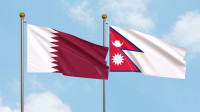National
Child marriage driving up maternal and newborn deaths: Report
Teenage pregnancy is highest in Karnali Province, at 21 percent, followed by Madhesh Province, at 20 percent, Koshi and Gandaki Province, at 13 percent, and Lumbini Province, at 10 percent.
Arjun Poudel
Nepal outlawed child marriage in 1963.
However, more than six decades later, the evil tradition is still in practice, due to which the country has been facing far-reaching and consequences, according to a report titled “Behavioural Determinants of Child Marriage and Adolescent Pregnancy In Nepal.
The report of a study jointly carried out by the Nepal Health Research Council and the United Nations Children’s Fund from November 2022 to April 2023 and published in 2024 also states that the behavioural drivers of child marriage and adolescent pregnancy in Nepal are multifaceted and deeply intertwined with societal norms, economic conditions and cultural expectations.
“Poverty, discriminatory practices and limited agency of adolescents, especially girls and in certain communities, contribute to early marriages,” reads the report. “Child marriage and adolescent pregnancy have for individuals, families and communities.”
Participants noted severe consequences of child marriage, including adolescent pregnancy, malnutrition, uterine prolapse, infant mortality and mental health issues.
According to the report, almost 20 percent of students expected to be in Grades 9 and 10 in Tripurasundari Municipality, Karnali Province, have left school due to marriage. Early marriage is nearly universal among Dalits in Dolpa district, with an almost 100 per cent prevalence rate, often leading to early pregnancies.
The influence of family decisions, perceptions of physical attractiveness and the desire for independence also play a pivotal role in child marriage.
These practices perpetuate cycles of poverty and underdevelopment, limiting the potential of young girls and hindering societal progress, the report noted.
The impact on the health of young brides and their children is severe, with increased risks of pregnancy-related complications, malnutrition, infant mortality rates, uterine prolapse and long-term health consequences, it said.
Additionally, the study also identified that the lack of comprehensive education and awareness, coupled with societal pressures and traditional beliefs, contribute to the perpetuation of these practices.
The prevalence of teenage marriages and pregnancies is widespread, especially in marginalized communities across the country.
According to the report of the study, child marriage also contributes to suicide in some cases. A few early-married couples reportedly ended their lives due to their parent’s refusal to accept their marriage.
Researchers talked to a teacher from Jhapa, who recounted a young couple's suicide in a tea garden after their family pressured them to separate to preserve the family’s honour.
Key persons in the Gurung and Kham Magar communities highlighted issues arising from miscommunication when a spouse works abroad. Instances of extramarital affairs or remarriage while away can also lead to family conflicts, occasionally resulting in suicides.
Child marriage diminishes educational opportunities, causing many girls to drop out of school and restricting their empowerment. Adolescent girls from Muslim and Musahar communities told researchers that they felt discomfort attending school in traditional marriage attire, like bangles and kurtas, while their classmates wore school uniforms.
Furthermore, the financial implications extend to the families involved, exacerbating economic challenges. The lack of education and job opportunities, along with the burden of raising a family, traps young couples in a cycle of poverty, according to the report.
The Nepal Demographic and Health Survey-2022 conducted by the Ministry of Health and Population, shows that overall, 14 percent of women aged 15-19 have been pregnant, including 10 percent who have had a live birth, while two percent experienced a pregnancy loss.
Teenage pregnancy is highest in Karnali Province, at 21 percent, followed by Madhesh Province, at 20 percent, Koshi and Gandaki Province, at 13 percent, and Lumbini Province, at 10 percent, according to the 2022 survey.
The Health Ministry survey suggests that the decision to quit school may contribute to early pregnancy among young girls. The report states that 33 percent of girls aged between 15 and 19 with no formal education are more likely to start childbearing earlier than those with at least some secondary education, which stands at eight percent.
Nepal has pledged to end child marriage by 2030 as part of its commitment to the United Nations Sustainable Development Goals and the Constitution of Nepal.
However, despite efforts to combat the practice, Nepal has the eighth-highest rate of child marriage in the world and the third-highest rate in South Asia.
According to Nepal’s Civil Code, the minimum age for marriage is 20 for both women and men. As per Article 173 of the Criminal Code, anyone found guilty of either committing or arranging a child marriage faces up to three years in jail and a fine of Rs30,000.




 17.12°C Kathmandu
17.12°C Kathmandu













%20(1).jpg&w=300&height=200)

